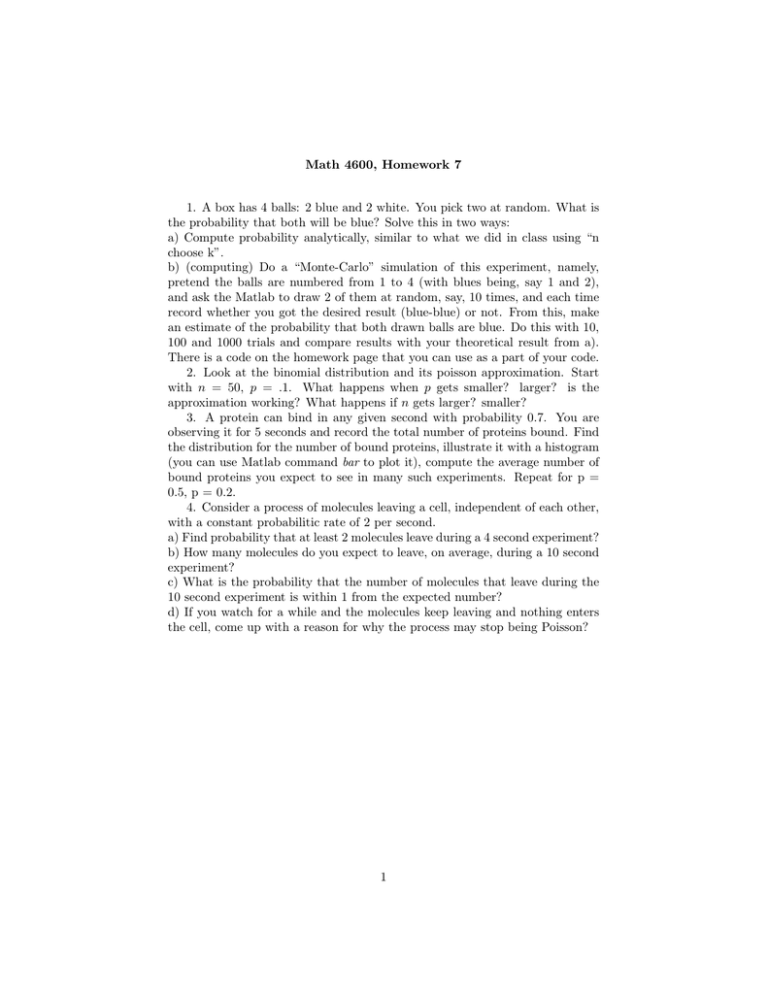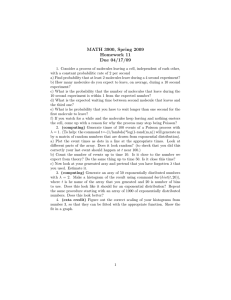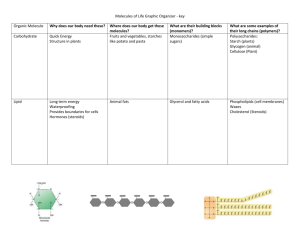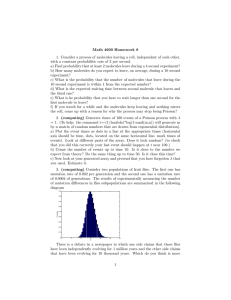Math 4600, Homework 7
advertisement

Math 4600, Homework 7 1. A box has 4 balls: 2 blue and 2 white. You pick two at random. What is the probability that both will be blue? Solve this in two ways: a) Compute probability analytically, similar to what we did in class using “n choose k”. b) (computing) Do a “Monte-Carlo” simulation of this experiment, namely, pretend the balls are numbered from 1 to 4 (with blues being, say 1 and 2), and ask the Matlab to draw 2 of them at random, say, 10 times, and each time record whether you got the desired result (blue-blue) or not. From this, make an estimate of the probability that both drawn balls are blue. Do this with 10, 100 and 1000 trials and compare results with your theoretical result from a). There is a code on the homework page that you can use as a part of your code. 2. Look at the binomial distribution and its poisson approximation. Start with n = 50, p = .1. What happens when p gets smaller? larger? is the approximation working? What happens if n gets larger? smaller? 3. A protein can bind in any given second with probability 0.7. You are observing it for 5 seconds and record the total number of proteins bound. Find the distribution for the number of bound proteins, illustrate it with a histogram (you can use Matlab command bar to plot it), compute the average number of bound proteins you expect to see in many such experiments. Repeat for p = 0.5, p = 0.2. 4. Consider a process of molecules leaving a cell, independent of each other, with a constant probabilitic rate of 2 per second. a) Find probability that at least 2 molecules leave during a 4 second experiment? b) How many molecules do you expect to leave, on average, during a 10 second experiment? c) What is the probability that the number of molecules that leave during the 10 second experiment is within 1 from the expected number? d) If you watch for a while and the molecules keep leaving and nothing enters the cell, come up with a reason for why the process may stop being Poisson? 1







